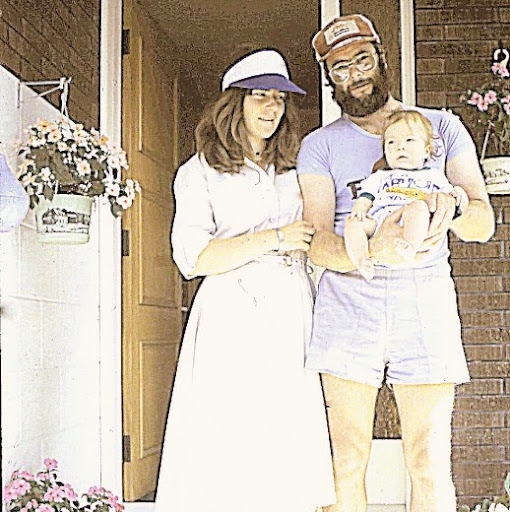Alan Michael Sutton
age ~44
from San Antonio, TX
- Also known as:
-
- Alan M Sutton
- Alan P Sutton
- Allan M Sutton
- Alan Suuton
Alan Sutton Phones & Addresses
- San Antonio, TX
- Rio Medina, TX
- Melrose, NM
- Glen Burnie, MD
- Aurora, CO
- Fort George G Meade, MD
- Elmendorf AFB, AK
- Jber, AK
Resumes

Human Resources Manager
view sourceWork:
Human Resources Manager

Alan Sutton
view source
Alan Sutton
view source
Alan Sutton
view source
Alan Sutton
view sourceLocation:
United States
License Records
Doctor Of Dental Surgery
Address:
18615 Double Frk Rd, San Antonio, TX 78258
License #:
202147 - Active
Issued Date:
Jan 15, 2014
Renew Date:
Mar 1, 2016
Expiration Date:
Feb 28, 2018
Type:
Dentist
Isbn (Books And Publications)







The Management of Uncertainty: Approaches, Methods, and Applications
view sourceAuthor
Alan Sutton
ISBN #
9024733871
Name / Title
Company / Classification
Phones & Addresses
HOCKING WILDERNESS, LTD
Us Patents
-
Caching Method For Selecting Data Blocks For Removal From Cache Based On Recall Probability And Size
view source -
US Patent:6742084, May 25, 2004
-
Filed:May 4, 2000
-
Appl. No.:09/564261
-
Inventors:Richard J. Defouw - Boulder CO
Alan Sutton - Boulder CO
Ronald W. Korngiebel - Westminister CO -
Assignee:Storage Technology Corporation - Louisville CO
-
International Classification:G06F 1200
-
US Classification:711133, 711134, 711135, 711136, 711171
-
Abstract:A caching method for selecting variable size data blocks for replacement or removal from a cache includes determining the size and the unreferenced time interval of each block in the cache. The size of a block is the amount of cache space taken up by the block. The unreferenced time interval of a block is the time that has elapsed since the block was last accessed, and may be determined using a least recently used (LRU) algorithm. The recall probability of each block in the cache is then determined. The recall probability of a block is a function of its unreferenced time interval and possibly size and other auxiliary parameters. The caching method then determines a quality factor (q) for each block. The (q) of a block is a function of its recall probability and size. The caching method concludes with removing from the cache the block with the lowest (q).
-
Method For Controlling Reutilization Of Data Space In Virtual Tape System
view source -
US Patent:6789161, Sep 7, 2004
-
Filed:Jul 23, 1998
-
Appl. No.:09/121254
-
Inventors:Stephen H. Blendermann - Boulder CO
Alan Ray Sutton - Boulder CO -
Assignee:Storage Technology Corporation - Louisville CO
-
International Classification:G06F 1200
-
US Classification:711111, 707206
-
Abstract:A method for selectively controlling reutilization of data space in a virtual tape system is provided which allows a user to designate whether data from a scratched virtual volume can be automatically deleted without any further action on the part of the user. This allows a user to selectively choose to create a safety net by which expired data could still be retrieved if so desired, while also minimizing the impact of such a safety net feature on the overall efficiency in space management otherwise provided by the virtual tape system.
-
Data Storage Management System And Method
view source -
US Patent:6925525, Aug 2, 2005
-
Filed:Sep 26, 2002
-
Appl. No.:10/255890
-
Inventors:Stephen H. Blendermann - Boulder CO, US
Alan Ray Sutton - Boulder CO, US
Robert Raicer - Longmont CO, US
L. Michael Anderson - Arvada CO, US
Clayton E. Ruff - Longmont CO, US
William G. Kefauver - Boulder CO, US -
Assignee:Storage Technology Corporation - Louisville CO
-
International Classification:G06F012/00
-
US Classification:711111, 711112, 710 52
-
Abstract:The present invention provides a virtual automated cartridge system (ACS) and data storage device management method which incorporates a temporary data buffer arrangement between multiple user systems and conventional physical data storage devices. The temporary data buffer arrangement emulates a compatible physical data storage device when accessed by each of the user systems, but allows simultaneous allocation of different users to access to read and write data to the temporary data buffer. A control processor automatically transfers data stored in the temporary data buffer arrangement to one of the physical data storage devices when allocation to a user has ended.
-
Data Storage Management Method For Selectively Controlling Reutilization Of Space In A Virtual Tape System
view source -
US Patent:7873781, Jan 18, 2011
-
Filed:Jun 24, 2008
-
Appl. No.:12/144742
-
Inventors:Stephen H. Blendermann - Boulder CO, US
Alan Ray Sutton - Boulder CO, US
Robert Raicer - Longmont CO, US
L. Michael Anderson - Arvada CO, US
Clayton E. Ruff - Longmont CO, US
William G. Kefauver - Boulder CO, US -
Assignee:Storage Technology Corporation - Louisville CO
-
International Classification:G06F 12/00
-
US Classification:711111, 711118, 711156, 711159, 711163, 711E12069
-
Abstract:A method for selectively controlling reutilization of space in a virtual tape system (VTS) having a buffer and a multiple volume tape cartridge includes transferring data volume files to the VTS. The buffer transfers the data making up these files as virtual tape volumes (VTVs) to different locations of the cartridge for storage. A file is selectively designated for the VTS to delete from storage after a date included with the file has elapsed by deleting the VTVs corresponding to the file from the cartridge to reuse space of the cartridge. The method includes detecting if a file transferred as VTVs to the cartridge has been designated for deletion. The VTS is prohibited from deleting the file after the date has elapsed if the file was not designated for deletion and is allowed to delete the file after the date has elapsed if the file was not designated for deletion.
-
Data Storage Management System And Method
view source -
US Patent:20050207235, Sep 22, 2005
-
Filed:May 17, 2005
-
Appl. No.:11/130940
-
Inventors:Stephen Blendermann - Boulder CO, US
Alan Sutton - Boulder CO, US
Robert Raicer - Longmont CO, US
L. Anderson - Arvada CO, US
Clayton Ruff - Longmont CO, US
William Kefauver - Boulder CO, US -
Assignee:Storage Technology Corporation - Louisville CO
-
International Classification:G11C005/00
-
US Classification:365189050
-
Abstract:A data storage management system and method includes a physical storage, an interim storage which acts as a virtual storage to the physical storage, and a manager. The manager assigns a first interim storage portion to the first computer for a time duration in lieu of the physical storage upon receipt of an allocation request from the first computer requesting allocation of data storage space on the physical storage, and assigns a different second interim storage portion to the second computer for a time duration in lieu of the physical storage upon receipt of an allocation request, during the time duration in which the first interim storage portion is assigned to the first computer, from the second computer requesting allocation of data storage space on the physical storage so that the computers have simultaneous access to the interim storage and the physical storage is free from monopolization by the computers.
-
Virtual Automated Cartridge System
view source -
US Patent:60946059, Jul 25, 2000
-
Filed:Jul 6, 1998
-
Appl. No.:9/110217
-
Inventors:Stephen H. Blendermann - Boulder CO
Alan Ray Sutton - Boulder CO
Robert Raicer - Niwot CO
L. Michael Anderson - Arvada CO
Clayton E. Ruff - Longmont CO
William G. Kefauver - Boulder CO -
Assignee:Storage Technology Corporation - Louisville CO
-
International Classification:G06F 700
-
US Classification:700214
-
Abstract:The present invention provides a virtual automated cartridge system (ACS) and data storage device management method which incorporates a temporary data buffer arrangement between multiple user systems and conventional physical data storage devices. The temporary data buffer arrangement emulates a compatible physical data storage device when accessed by each of the user systems, but allows simultaneous allocation of different users to access to read and write data to the temporary data buffer. A control processor automatically transfers data stored in the temporary data buffer arrangement to one of the physical data storage devices when allocation to a user has ended.
-
Method For Reclaiming Fragmented Space On A Physical Data Storage Cartridge
view source -
US Patent:6151666, Nov 21, 2000
-
Filed:May 27, 1998
-
Appl. No.:9/085192
-
Inventors:Stephen H. Blendermann - Boulder CO
Alan Ray Sutton - Boulder CO -
Assignee:Storage Technology Corporation - Louisville CO
-
International Classification:G06F 1200
-
US Classification:711170
-
Abstract:The present invention provides a method for selectively reclaiming fragmented space on a multiple volume cartridge (MVC) device using a cost-benefit type analysis to determine whether making the fragmented space useable justifies moving all nonexpired data volume sets to another MVC. The present invention analyzes the allocation of space on the MVC to determine the location and size of any gaps between nonexpired data volume sets. Any gaps appearing at the end of the MVC are automatically reallocated for subsequent use. Any gaps appearing between nonexpired data volume sets are analyzed to determine whether the size and location meet predetermined criteria before moving any of the nonexpired data volume sets. In addition, the present invention allows selective movement of less than all of the nonexpired data volume sets if the size of the separating gap is larger than any nonexpired data volume sets appearing after the gap.
-
Method For Verifying Availability Of Data Space In Virtual Tape System
view source -
US Patent:62894250, Sep 11, 2001
-
Filed:Jul 1, 1998
-
Appl. No.:9/108888
-
Inventors:Stephen H. Blendermann - Boulder CO
Alan Ray Sutton - Boulder CO -
Assignee:Storage Technology Corporation - Louisville CO
-
International Classification:G06F 1200
-
US Classification:711170
-
Abstract:A method for verifying availability of reusable data space on a selected virtual scratch tape in a virtual tape system utilizes volume label information routinely maintained in an external tape inventory management arrangement to generate labels separate from the actual volume labels stored on a corresponding tape. The volume labels are generated in a format compatible for input to an external tape management system after the selected virtual scratch tape has been mounted on a virtual tape drive. The "on-the-fly" generation of the separate volume labels based on preexisting label information allows the present invention to significantly reduce processing time and needless data transfers typically required to verify whether a scratch tape can in fact be reused, thereby increasing overall efficiency in data storage management and storage space utilization.
Plaxo

alan sutton
view source40 plus years writing about catering industry on variety of titles and varied roles. Now full time pastoring church in Dunstable.

Alan Sutton
view source
Alan Sutton
view sourceRobmarine

Alan Sutton
view sourceas

Alan Sutton
view sourceDidata
Classmates

Alan Sutton
view sourceSchools:
Adolfo Camarillo High School Camarillo CA 1986-1990
Community:
Linda Vaughn, Marcella Nystrom, Nelson Norbury, Becky Temple

Alan Sutton
view sourceSchools:
Sallas Mahone Elementary School Valdosta GA 1963-1969, Valdosta Junior High School Valdosta GA 1969-1971, Pinevale High School Valdosta GA 1971-1972
Community:
Harriett Humphreys

Alan Sutton
view sourceSchools:
West Central High School Francesville IN 1983-1987
Community:
Michael Scheller, Trena Pelsy, Rebekah Weems

Alan Sutton
view sourceSchools:
Mcpherson Park High School Burnaby Saudi Arabia 1962-1966
Community:
Al Borody, Terry Pastro, Lynda Gaisson, Michele Deslauriers, Mark Backus

Alan Sutton
view sourceSchools:
Kenton School Skokie IL 1954-1959, Lincoln Junior High School Skokie IL 1959-1962
Community:
Andi Irgang, Marlene Kascle, Elliott Hartstein, Michael Treitman, Wayne Sandler

Alan Sutton | Lake Charle...
view source
Alan Sutton, Goldsboro Hi...
view source
Alan Sutton | Hunterdon C...
view sourceYoutube
Myspace
Googleplus

Alan Sutton
Work:
U.S. Army - Senior Ranger Instructor

Alan Sutton

Alan Sutton

Alan Sutton

Alan Sutton

Alan Sutton

Alan Sutton

Alan Sutton

Alan Sutton
view source
Alan Sutton
view source
Alan Sutton
view source
Alan Sutton
view source
Alan Sutton
view source
Alan Sutton
view source
Alan StraightYac Sutton
view source
Alan Thunderchild Sutton
view sourceFlickr
Get Report for Alan Michael Sutton from San Antonio, TX, age ~44













